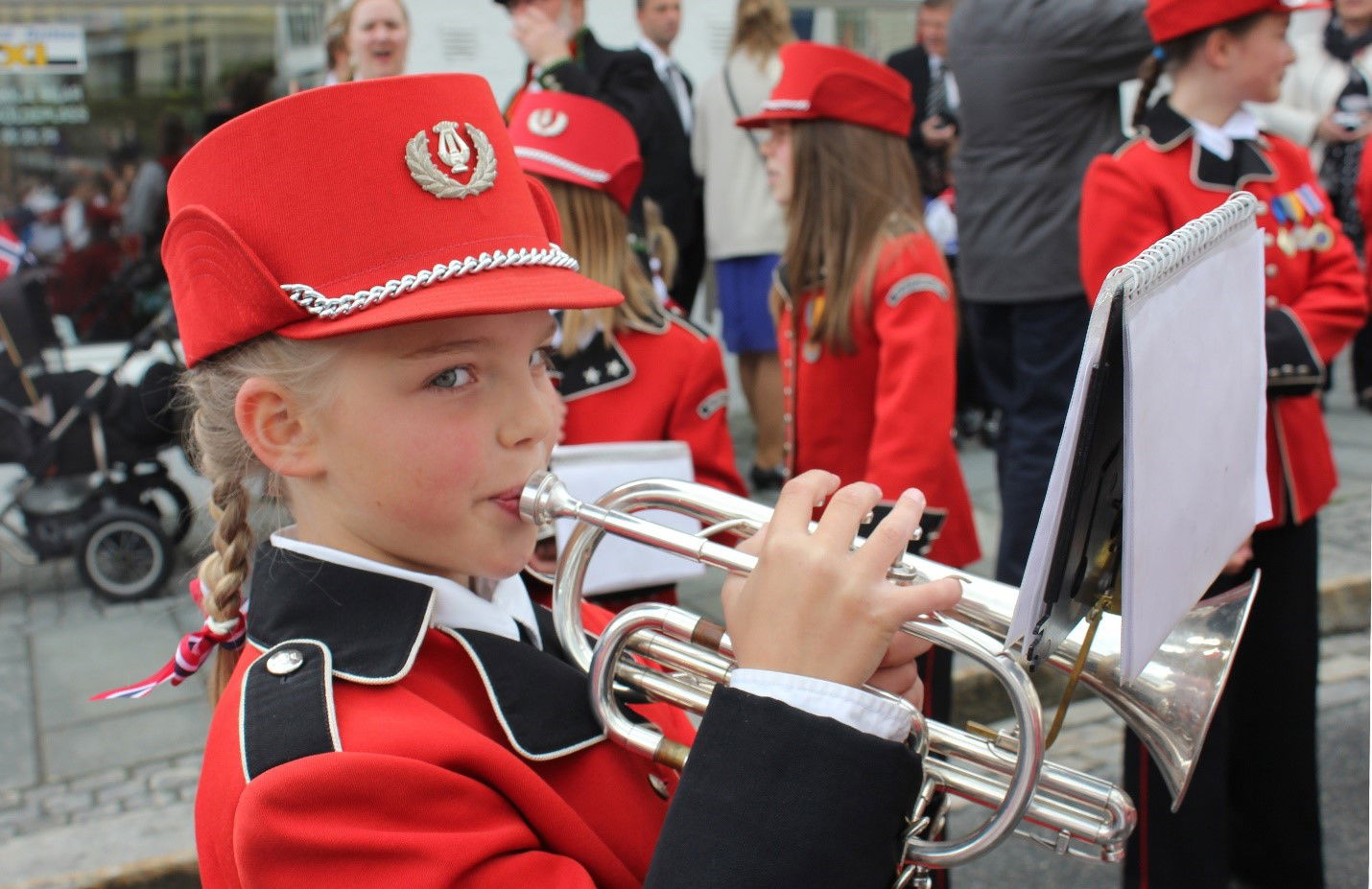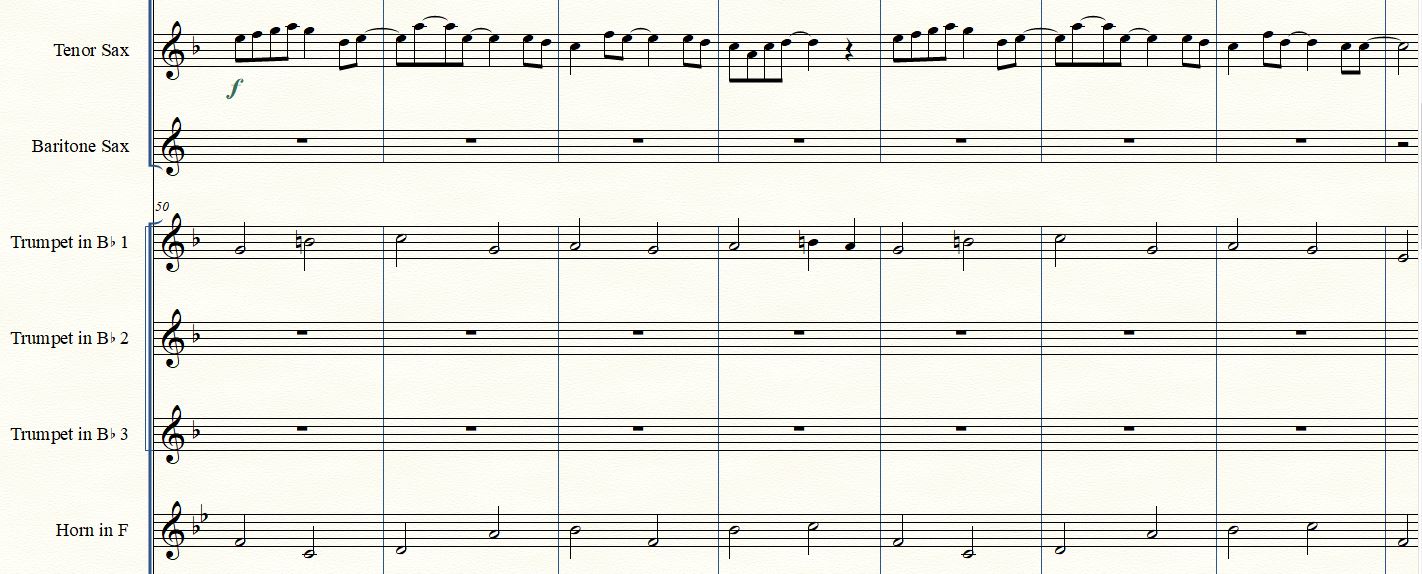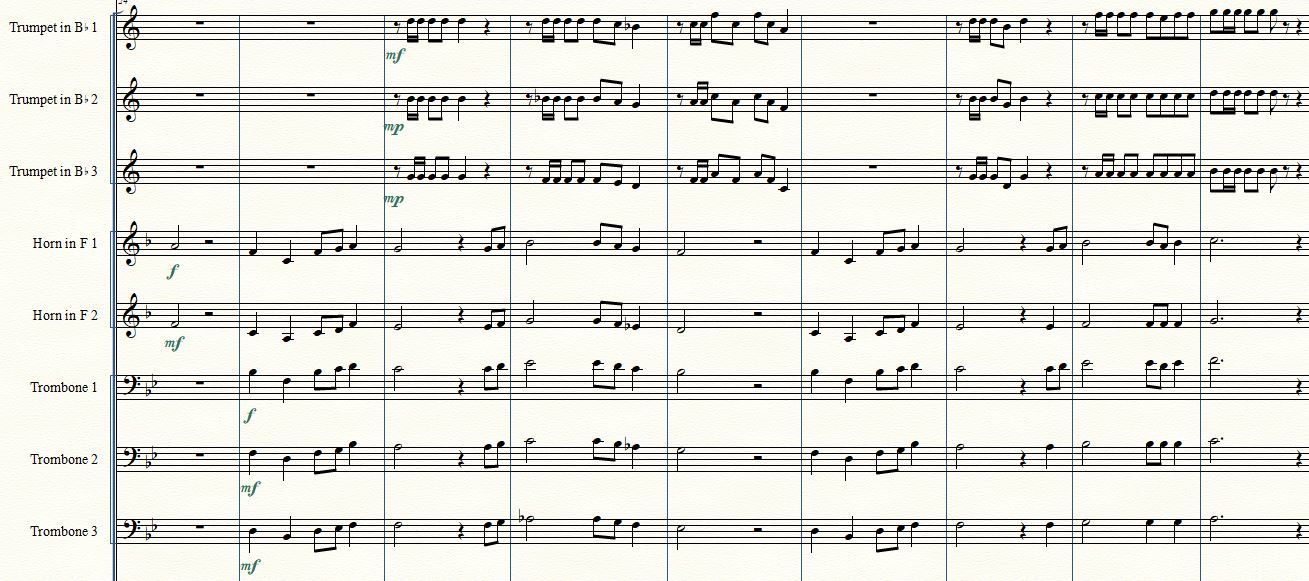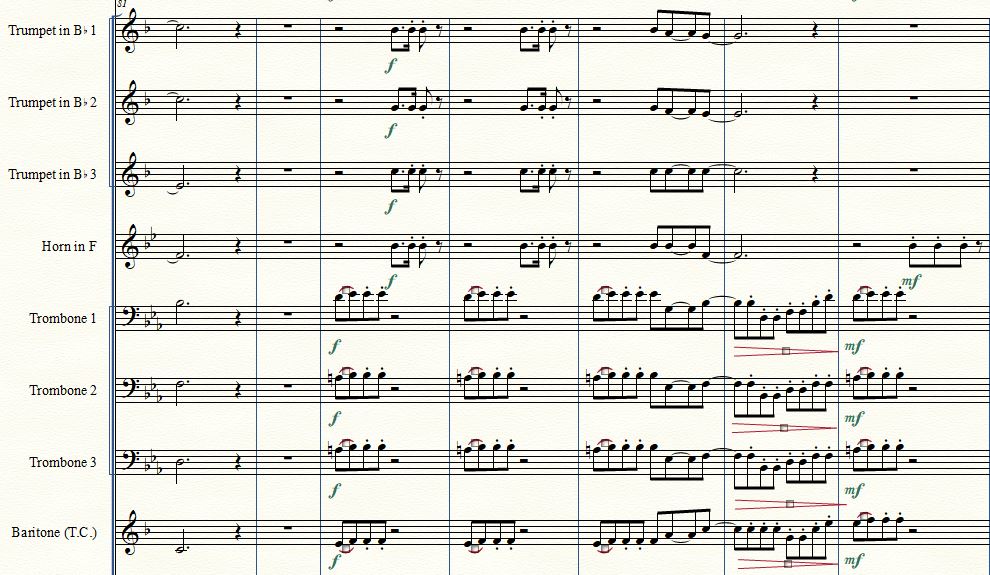Secrets to Composing Exciting Yet Easily Playable Concert Band Music

NOTE – In this article, I will be referring to a number of Concert band pieces that were written by Salt Cellar. Here are links so you can hear them. Rockin’ Rondo
Creating a composition for a concert band that strikes a balance between complexity and accessibility is a unique art. As musicians and composers, we aim to captivate our audience while ensuring that the piece remains within reach for performers. In this article, we will explore key strategies to compose a piece that sounds difficult but is, in fact, approachable for concert band settings.
1. Understand Your Audience: Before delving into the composition process, it's crucial to consider the skill level of the performers and the expectations of the audience. For concert band pieces, versatility is key. Aim for a composition that challenges musicians without overwhelming them, keeping in mind the enjoyment of both players and listeners.
The challenge here is that in any given concert band, there will be a wide scope of ability, most often corresponding to the age or grade of the player. First parts like clarinet, trumpet or trombone, tend to be more mature musicians, and will need something to play that will still challenge them. Second and third parts are usually comprised of younger, less skilled players who will also need a bit of a challenge, but of a simpler nature than the first parts.

Above is a bit of Rockin’ Rondo. Notice that the first trumpet part has a bit of a challenge for the more mature musicians while the second and third parts have their own challenge in that the counting isn’t straight forward and needs to be played precisely so as not to interfere with the first part’s melody.
2. Melodic and Harmonic Simplicity: Craft a memorable melody that serves as the cornerstone of your composition. A strong, accessible melody provides a focal point for both performers and the audience, creating a cohesive musical experience. Pair this with harmonies that are rich but not overly complex, allowing musicians to navigate the piece with confidence.

Above is the melody for the C section in Rockin’ Rondo. It sounds a little like a love song from the 1960s or ‘70s and has a great hook. Also notice that, besides the drums, there are only three instruments playing. The Tenor Sax has the melody. The French Horn is playing the bass line and the trumpet provides some gentle harmony.

Above is a transition in Baroquen Carriage that uses what might be described as descending suspensions with their resolution. The notes in each part aren’t far apart, and, in combination, they’re actually quite close for a beat, then resolve the tension with normal triads. This provides a lot of lush harmonies without being difficult at all.
3. Using Dynamic Variations: Building a piece with dynamic variations adds depth and interest. Begin with softer dynamics, introducing the thematic material gently. As the piece unfolds, strategically incorporate crescendos and decrescendos to create peaks and valleys, contributing to the illusion of complexity without overwhelming the performers.

Above is a sample of one of the many places in compositions by Salt Cellar in which the dynamics withing a section are different to allow for the melody to be heard above any harmony or other accompanying part.
4. Rhythmic Variations: Introduce rhythmic variations to infuse energy and excitement into your composition. Utilize syncopation, irregular time signatures, and varying tempos to create interest. However, be mindful of the performers' capabilities, avoiding overly intricate rhythmic patterns that may hinder execution.


Above are two renderings of the main theme in Rockin’ Rondo. The first is the basic theme. There’s nothing fancy, just a tinkering with a suspension. Notice that it starts quite softly, then packs quite a punch in the last two notes of the theme. The second contains the same suspension, but it is treated quite differently; if it were in a sonata it would be part of the development.

Above is a section of the old pop song Windy in which the tempo doesn’t change but the time signature does. The effect is as if the measures had been subdivided into triplets. At the end of the short section, it pops back into 4/4 without breaking stride.
5. Contrasting Sections: Provide variety by incorporating contrasting sections within your piece. This can include changes in tempo, mood, or instrumental focus. These shifts not only add interest but also offer relief to musicians, preventing monotony and ensuring engagement throughout the performance.
Virtually all of Salt Cellar’s compositions and arrangements contain contrasts of one form or another, whether they are for Concert Band, Choral Group or String Orchestra. In many of them, there is a built-in method for the band to change tempo that even the least skilled player can use. Sometimes this takes the form of a single measure of rest, a held note or a simple rhythm that can be played in the new tempo easily.
6. Balanced Instrumentation: Consider the capabilities of each instrument within the concert band. Distribute challenging passages evenly among sections, avoiding excessive demands on any one group. A well-balanced instrumentation allows for a unified sound while accommodating varying skill levels.
This can be difficult since not all bands have the same number of instruments. Salt Cellar’s Concert band music contains the instrumentation most likely to be found in a high school or community band. As always, we can add any instruments that may be lacking in the arrangement.
7. Articulation and Phrasing: Articulation and phrasing play a significant role in creating a sense of difficulty. Experiment with staccato, legato, and accent markings to shape the overall sound. Thoughtful phrasing adds nuance, allowing performers to express themselves within the framework of the composition.
We have a number of arrangements and compositions that use woodwinds and sometimes brass to provide a staccato background to the rest of the sound, much like violins might do in an orchestra.
8. Collaborate with Musicians: Engage with the musicians who will be performing your piece during the composition process. Seek their input on playability, challenges, and preferences. Collaborative efforts ensure that the final composition aligns with the abilities and tastes of the ensemble.
Conclusion: Composing a concert band piece that sounds difficult yet is accessible requires a delicate balance of creativity and consideration. By understanding your audience, incorporating melodic and harmonic simplicity, employing gradual dynamic progression, experimenting with rhythmic variations, introducing contrasting sections, maintaining balanced instrumentation, and focusing on articulation and phrasing, you can craft a compelling and approachable composition that captivates both performers and listeners. Embrace the challenge, and let your musical creativity shine in a way that resonates with musicians and audiences alike.
Salt Cellar Creations understands the excitement and wonder that a Concert Band can convey and has a growing library of original works and arrangements. Find out more about what Salt Cellar Creations has to offer for Concert Bands HERE. Explore the available music HERE.
SCC can also compose an original piece for you or do a custom arrangement for you. There are two ways that this can be done; one is much more affordable than the other. And SCC is always looking for ideas of pieces to arrange or suggestions for original pieces.
We have sold music not only in the US but in Canada, the United Kingdom, France, Australia, New Zealand and Austria. Please visit the WEBSITE or CONTACT US to let us know what we can do for you!